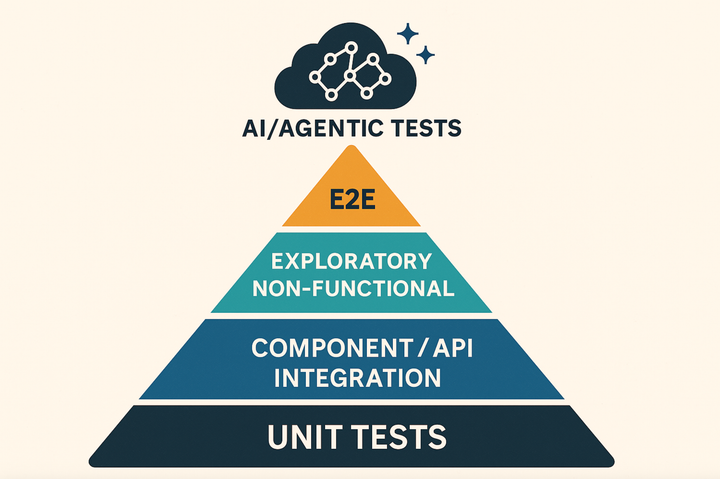Let’s Be Honest: Traditional QA Is Broken

We don’t talk about this enough.
Most QA teams aren’t set up to succeed. They're treated like safety nets — brought in at the tail end of a sprint, expected to find the bugs, rubber-stamp the release, and somehow “own quality.” But here’s the truth:
QA isn’t failing. The system around it is.
I’ve spent over 15 years in software quality — leading teams, fixing pipelines, building test strategies from the ground up. I’ve walked into orgs with thousands of flaky tests and no traceability, and teams that were drowning in bug reports with no time to breathe, let alone innovate.
Traditional QA is reactive. It’s siloed. It’s reduced to a checklist — “Did you test it?” — rather than a core part of how we build trust in software.
Too often, teams throw automation at the problem. “Let’s add more tests. Let’s reach 90% coverage. Let’s automate everything.” But here’s what really happens:
- Test suites become bloated and fragile
- Pipelines slow to a crawl with every build
- Developers ignore red builds because “oh, that one always fails”
Sound familiar?
I've inherited these systems. I’ve watched entire teams lose faith in their test infrastructure. And I’ve fixed it — not with more headcount or bigger tools, but with a mindset shift.
The Shift: Enter Quality Engineering
Quality Engineering isn’t just “QA with code.”
It’s a rethinking of how quality fits into software development — not as an afterthought, not as a phase, but as an engineering discipline in its own right.
A true Quality Engineer doesn’t just write tests — they design feedback loops. They don’t chase bugs — they prevent them. They don’t gate releases — they build systems that make trust visible.
Quality Engineering means:
Tests That Serve a Purpose
Coverage doesn’t equal confidence. QE means writing tests that matter — focused, maintainable, and aligned to risk. It’s about asking “what does this test prove?” and pruning the rest.
Quality as an Engineering Concern
It’s not just the QA team’s job. Developers, PMs, even designers — everyone contributes to quality. QE helps define what good looks like and ensures the delivery process supports it from day one.
Smart Tools, Used with Discipline
Playwright, Python, pytest, Allure — these are great tools. But they don’t fix strategy. QE is about using automation where it provides real value, not just because you can.
Confidence, Not Just Coverage
Can you release right now? QE builds systems that answer that question with data — stable pipelines, clear traceability, and fast feedback.
And increasingly, that includes AI. But not the buzzword kind — not “just add GPT.” Real QE uses AI to solve real problems: test generation, flakiness triage, requirements mapping, even prioritization.
What You’ll Find Here
If you’ve ever felt like your test suite is working against you… or you’re the only one on your team thinking about release risk… or your role has been boxed into a cycle of “get the ticket → test the ticket → repeat”…
You're not alone.
This blog, and the Break the Build newsletter, are my way of sharing everything I’ve learned — the wins and the hard lessons — from building QA systems that actually work at scale.
Here’s what to expect:
Real-World Automation Strategies
No more brittle Playwright hacks or endless waitForSelector. I’ll share scalable patterns, repo structures, and CI/CD setups that don’t crumble under real-world conditions.
Python Patterns and Utilities That Scale
Test data, fixtures, test case generation — done the right way. If you’ve ever wished your test repo had more structure (and less duplication), this is for you.
AI That Actually Helps
From AI-powered test case suggestions to using LLMs for smarter reporting and triage — I’ll show how to implement these tools without becoming dependent on magic. Just pragmatic help where it makes sense.
Career Growth for QA Pros
Want to move from manual testing into automation? From individual contributor to test architect? From QA to Director of Quality? I’ve done all three — and I’ll break down how to grow without burning out.
Traceability and Strategy
Tools like Allure TestOps, Jira, and Zephyr can actually work together. I’ll show you how to tie everything together — from requirements → tests → results — and make quality visible to your org.
If you’re tired of reactive QA… if you want to build real influence as a QE… if you want to go from “tester” to trusted partner in product delivery…
This space is for you.
Let’s Rebuild QA Together
QA has been treated as a cost center for too long.
We have the opportunity — and responsibility — to build something better. Something proactive. Collaborative. Respected. Strategic.
That’s what Quality Engineering is about. And that’s what Break the Build exists to support.
Here's what to do next:
- Subscribe to the newsletter — you’ll get all new blog posts straight to your inbox (plus a few bonus resources I don’t post anywhere else)
- Comment, share, engage — the best way to grow this movement is together
- Start small — pick one idea from a post, try it on your team, and let me know how it goes
I’ll be publishing weekly — covering the frameworks, tools, mindsets, and systems that make real quality possible in modern engineering.
It’s time to stop patching problems.
Let’s start engineering quality.
Let’s break the build — on purpose.



Comments ()